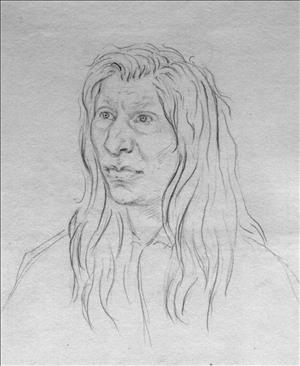On April 10, 1856, Yakamas and Klickitats under Kamiakin (ca. 1800-1877) ambush Oregon volunteers under Colonel Thomas Cornelius along Satus Creek near what will be the boundary between Klickitat and Yakima counties. The Indians break off the engagement and the volunteers continue their withdrawal from Yakama country. One soldier and four Indians die.
In March 1856, two regiments of Oregon volunteers under the command of Colonel Thomas Cornelius left their base at Fort Bennett in the Walla Walla Valley and swept the Palouse country north of the Snake River and west to the Columbia looking for hostile Indians. They managed to kill eight or nine Palouse (accounts variously describe these as "braves" and as older individuals unable to flee). Although they seize some Indian foodstuffs, the volunteers run short of supplies and they eat the one Indian horse they find.
On the Columbia River, at the mouth of the Yakima River on April 8 Cornelius divided his forces under the observation of Kamiakin and his allies. Six companies rode to the Walla Walla Valley while the rest, five companies of 241 men, proceeded up the Yakima River and then south up Satus Creek to return to Fort Dalles. As the column progressed, Indian riders summoned reinforcements.
On the afternoon of April 9, a volunteer scout spotted several hundred Indians ahead. Cornelius made camp, expecting a battle soon. Before dawn the next day, April 10, Captain Absolam J. Hembree (1813-1856) led eight other soldiers on a reconnaissance. When the group stopped, Captain Hembree and two others went to a summit and Hembree began to sweep the area with a telescope. A Yakama fired at Hembree and he took a ball in the abdomen. The other volunteers fled and the wounded Hembree managed to kill three Yakamas -- Pah-ow-re, Shu-win-ne, and Waken-shear -- before being finished off by the We-sah-ne-berts.
The Indians fired more than 50 shots, chasing the volunteers back toward their camp. The Yakamas were impressed with the scouts' good luck in escaping injury. Alerted by all the shooting, the Oregon men in camp took up a defensive position on a hill. From there they counterattacked the Indians driving them from another hill they had occupied. One Yakama died there. The fighting lasted until about noon when Kamiakin, signaling his men with a black flag, ordered a withdrawal. One Klickitat, Yellow-wash, managed to slip behind the volunteers and drive off most of their stock.
In the 1860s, Yakima Valley rancher A. J. Splawn interviewed Yakama veterans of this fight, who spoke of the volunteers' bravery. He places the location of Hembree's ambush as on the north side of Dry Creek, east of the Toppenish and Goldendale Road (State Route 97), about a mile south of the top of the Toppenish hill on that road. The battle with Cornelius's main force was down stream, south of there.
Colonel Cornelius continued the march toward Fort Dalles and the men had to eat some of their jaded horses. On the way, two friendly Klickitats rode up to the column not suspecting any danger. The volunteers shot and killed them both.
At Fort Dalles the volunteers found that U.S. Army troops under Colonel George Wright (1803-1865) had arrived in the territory. The governor of Oregon ordered the volunteers mustered out and by the middle of May, all had returned to their homes.
The volunteers brought out Hembree's stripped and scalped body for reburial at his home in Yamhill, Oregon.

